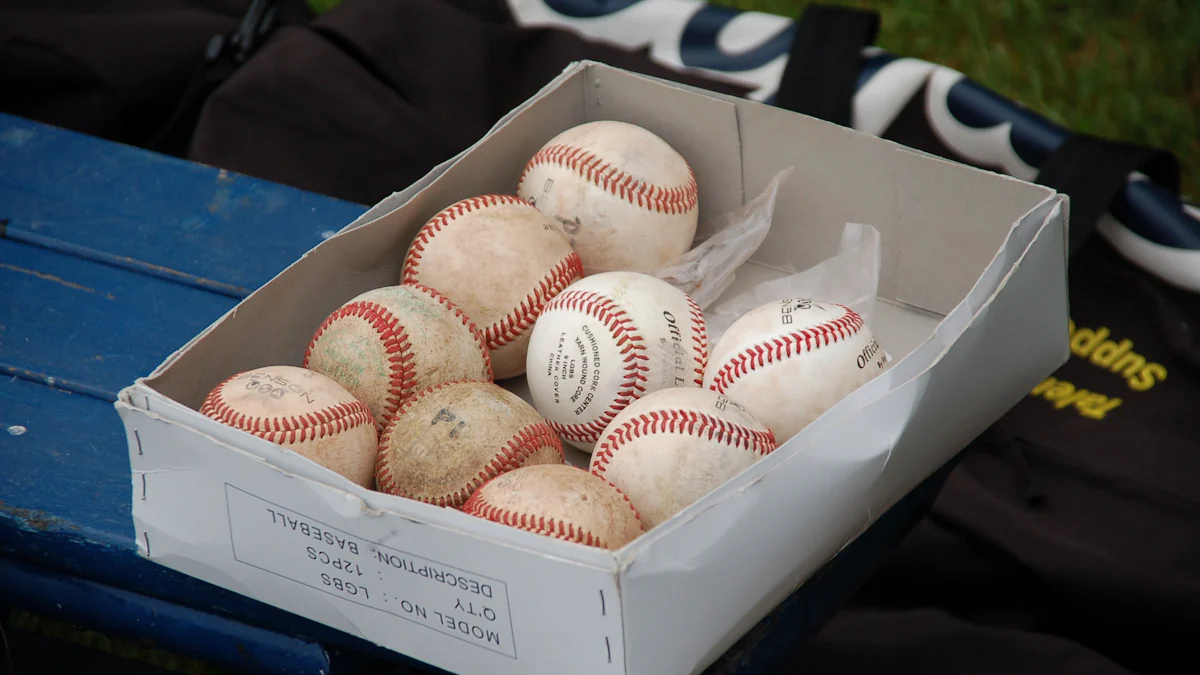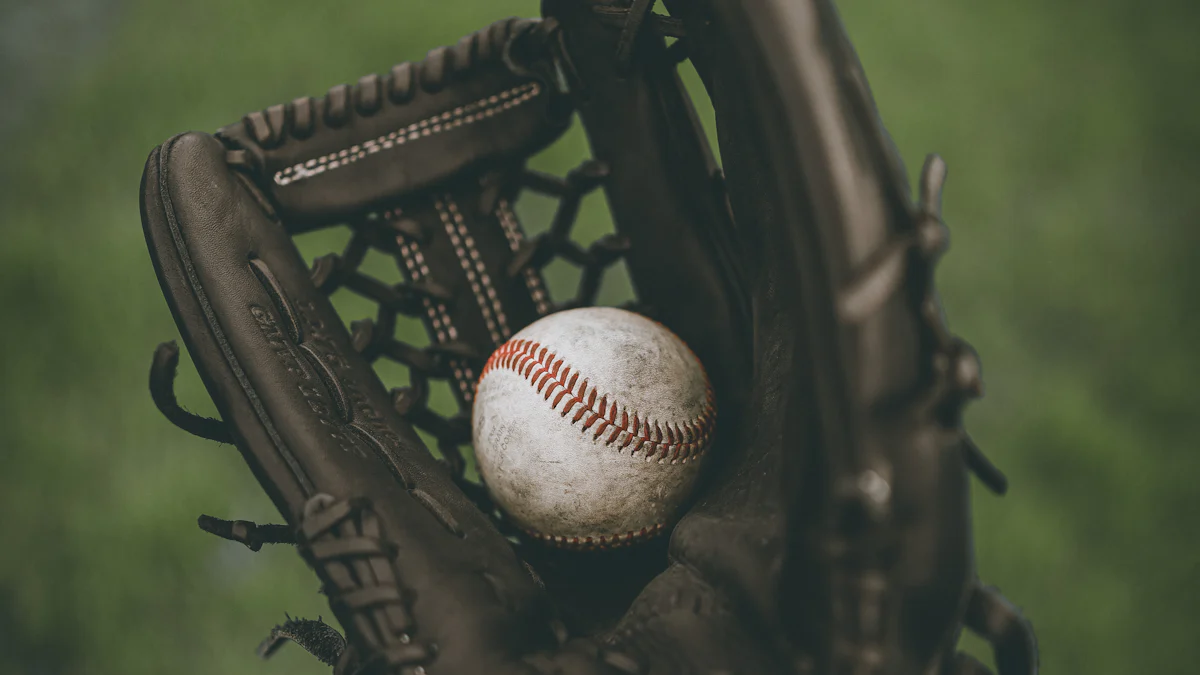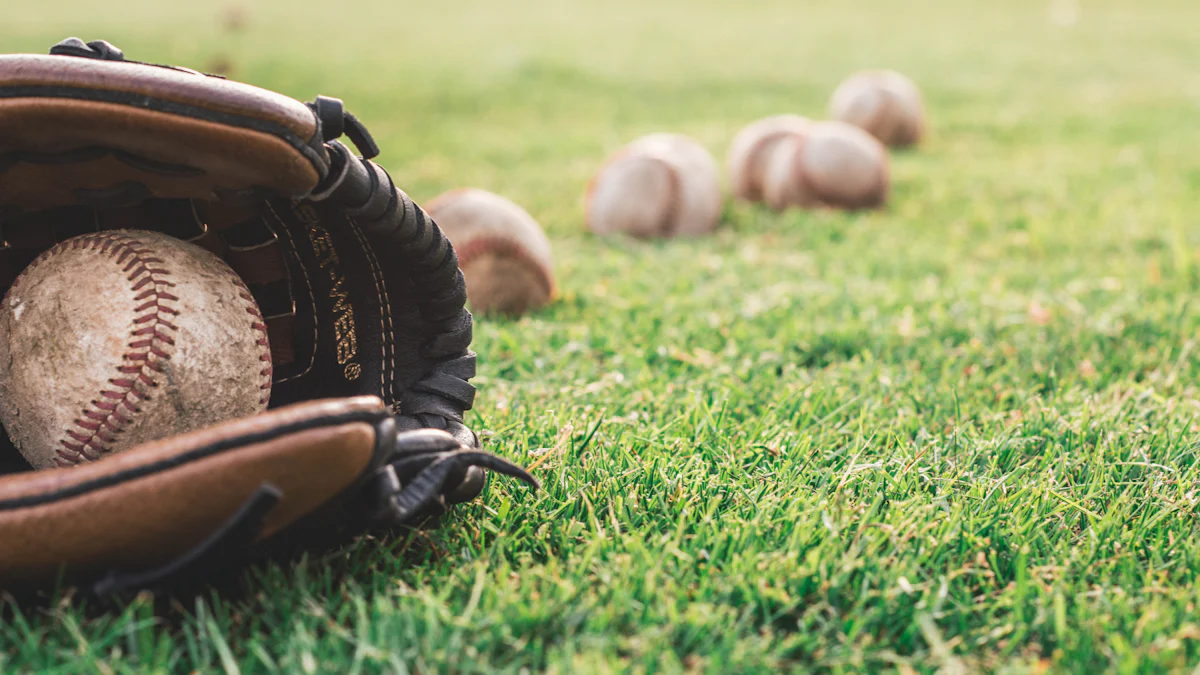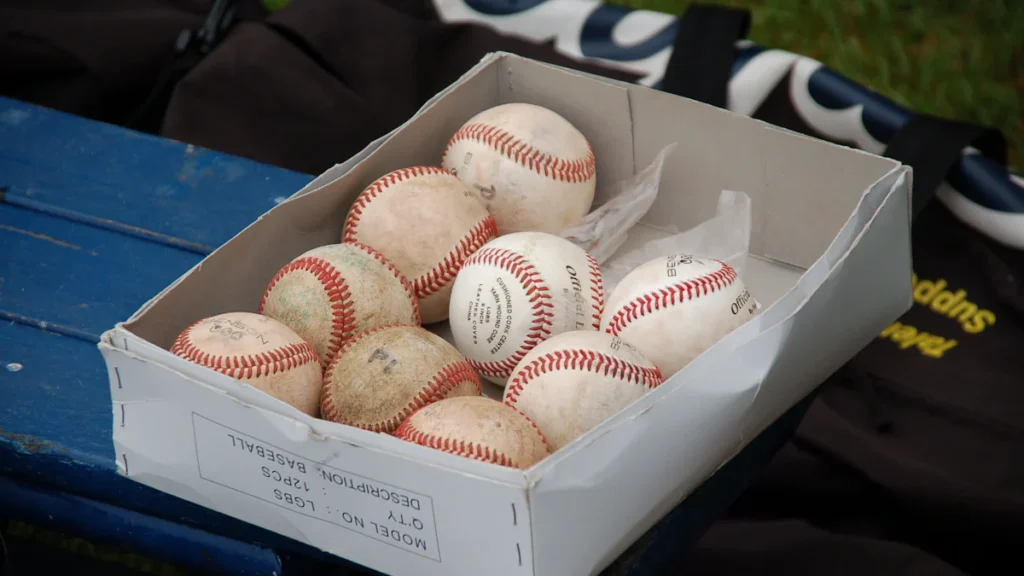
Have you ever wondered why professional baseball games never use dirt-covered baseballs? Dirt might seem harmless, but it creates serious problems on the field. It changes the ball’s weight and balance, making it harder for pitchers to throw accurately. Players struggle to grip it properly, which leads to wild pitches and missed plays. Dirt also damages the leather surface, reducing the ball’s durability. Maintaining clean baseballs during a game is already a challenge, and adding dirt only makes it worse. These issues explain why dirt baseball cannot be used in professional games.
Key Takeaways
Dirt alters the weight and balance of baseballs, making them harder to throw accurately and catch effectively.
Using dirt-covered baseballs increases the risk of injuries due to unpredictable throws and reduced grip for pitchers.
Dirt obscures the visibility of the ball, leading to missed catches and potential collisions on the field.
Inconsistent gameplay caused by dirt disrupts the flow of the game and undermines fairness between teams.
Professional leagues use specialized rubbing mud to enhance grip without compromising the ball’s integrity or performance.
Maintaining clean baseballs reduces maintenance challenges and costs associated with frequent replacements during games.
The use of standardized mud ensures that all players compete under the same conditions, promoting fairness and consistency.
Why Dirt Baseball Cannot Be Used: Impact on Performance

Changes in Weight and Balance
How dirt increases the ball’s weight
When dirt sticks to a baseball, it adds extra weight. Even a small amount of dirt can throw off the ball’s original design. Baseballs are carefully manufactured to meet strict weight standards, ensuring consistency during gameplay. Adding dirt disrupts this balance. The dirt clings to the leather surface, soaking up moisture and creating an uneven distribution of weight. This makes the ball heavier and harder to handle.
Effects on the ball’s balance and trajectory
The added weight from dirt doesn’t just make the ball heavier—it also affects its balance. A baseball’s balance is crucial for maintaining a predictable trajectory. Dirt buildup creates uneven surfaces, causing the ball to wobble or veer off course. For pitchers, this means less control over their throws. For fielders, it means unpredictable bounces that make catching more difficult. These changes disrupt the flow of the game and make it harder for players to perform at their best.
Aerodynamic Disruptions
How dirt affects the ball’s flight path
Dirt-covered baseballs don’t glide through the air like clean ones. Dirt particles create rough patches on the ball’s surface, increasing air resistance. This disrupts the ball’s aerodynamics, slowing it down and altering its flight path. A pitcher aiming for the strike zone might find the ball drifting away, frustrating both the player and the fans. The smooth surface of a clean baseball allows for consistent movement, something dirt-covered balls simply can’t provide.
Reduced accuracy for pitchers and fielders
Accuracy is everything in baseball. Dirt-covered balls make it nearly impossible to achieve. For pitchers, the dirt interferes with their grip, leading to wild pitches. Fielders face similar challenges. A ball that doesn’t travel as expected can result in missed catches or errors. This lack of precision affects the overall quality of the game, making it clear why dirt baseball cannot be used in professional settings.
Grip and Handling Issues
Challenges for pitchers in maintaining control
Pitchers rely on a firm grip to control the ball’s spin and speed. Dirt-covered baseballs reduce friction, making them slippery and hard to hold. Without proper grip, pitchers struggle to execute their pitches effectively. This not only impacts their performance but also increases the risk of accidental wild pitches, which can endanger batters and catchers.
Impact on batters’ ability to hit effectively
Batters also face difficulties when dirt-covered balls are in play. The stickiness of dirt can cause the ball to behave unpredictably when it makes contact with the bat. Instead of a clean hit, the ball might spin awkwardly or lose momentum. This unpredictability frustrates batters and diminishes the excitement of the game. Clean baseballs ensure fair competition by providing consistent performance for both pitchers and batters.
Why Dirt Baseball Cannot Be Used: Safety Concerns
Increased Risk of Injuries
How dirt baseballs can slip from pitchers’ hands
Imagine gripping a baseball covered in dirt. The stickiness of dirt might seem helpful at first, but it actually reduces the friction needed for a secure hold. When pitchers try to throw, the ball can easily slip from their hands. This lack of control creates unpredictable throws, which can lead to dangerous situations on the field. A wild pitch could hit a batter or even injure a catcher. Professional leagues prioritize safety, and dirt-covered baseballs simply don’t meet those standards.
Risks of wild pitches and erratic throws
Wild pitches aren’t just frustrating—they’re risky. Dirt on a baseball makes it harder for pitchers to control their throws. The ball might veer off in unexpected directions, putting players at risk. Batters could get hit, and fielders might struggle to react in time. These erratic throws disrupt the game and increase the chances of injuries. Clean baseballs ensure that pitchers can maintain control, keeping everyone on the field safer.
Reduced Visibility
How dirt obscures the ball’s visibility for players
Dirt doesn’t just affect grip—it also impacts visibility. A baseball covered in dirt becomes harder to see, especially during fast-paced plays. Players rely on clear visibility to track the ball’s movement. Dirt smudges the surface, blending it with the background and making it difficult to spot. This can lead to missed catches or delayed reactions, both of which can change the outcome of a game. Professional leagues avoid these issues by using clean, well-maintained baseballs.
Potential for collisions and missed catches
When players can’t see the ball clearly, the risks go beyond missed catches. Poor visibility increases the chances of collisions between teammates or even opponents. Imagine two outfielders running toward the same ball, unable to communicate because they can’t see it properly. These moments can result in serious injuries. Clean baseballs help players stay aware and avoid dangerous situations, ensuring smoother gameplay and fewer accidents.
“The secrets of baseball’s magic mud” highlights how specialized mud enhances grip and maintains the ball’s integrity without compromising visibility. Dirt, on the other hand, fails to provide these benefits, making it unsuitable for professional use.
Why Dirt Baseball Cannot Be Used: Game Integrity
Inconsistent Gameplay
How dirt baseballs lead to unpredictable outcomes
Dirt-covered baseballs create chaos on the field. The dirt clinging to the ball’s surface changes its weight and texture, leading to erratic behavior. When you watch a game, you expect the ball to move predictably. Dirt disrupts this expectation. A pitch might suddenly veer off course, or a ground ball could bounce unpredictably. These inconsistencies make it harder for players to anticipate the ball’s movement, which can completely alter the flow of the game.
Professional baseball thrives on precision and consistency. Every ball is designed to meet strict standards, ensuring fair play. Dirt-covered balls fail to meet these standards. They introduce random variables that no player can control. This unpredictability frustrates players and fans alike, making it clear why dirt baseball cannot be used in professional games.
Challenges in maintaining fairness for both teams
Fairness is the cornerstone of any professional sport. Dirt-covered baseballs threaten this balance. Imagine one team adapting better to the unpredictable behavior of a dirty ball while the other struggles. This imbalance gives one side an unfair advantage, undermining the integrity of the game.
Clean baseballs ensure that both teams compete on equal footing. The consistent performance of a clean ball allows players to rely on their skills rather than luck. Dirt-covered balls, however, shift the focus away from skill and toward chance, which is unacceptable in professional leagues.
Unfair Advantages
How dirt can alter the ball’s behavior
Dirt doesn’t just make the ball heavier—it also changes how it behaves. When dirt sticks to the leather surface, it creates rough patches that affect the ball’s spin and movement. A pitcher might unintentionally throw a curveball when aiming for a fastball, or a batter might misjudge the ball’s trajectory. These changes can give certain players an unintended edge, disrupting the balance of the game.
In contrast, specialized mud like Lena Blackburne Baseball Rubbing Mud enhances grip without altering the ball’s natural behavior. This mud ensures that pitchers maintain control while keeping the game fair. Dirt, however, lacks these properties, making it unsuitable for professional use.
Potential for exploitation by players
Dirt-covered baseballs open the door to exploitation. Players could intentionally manipulate the dirt on the ball to gain an advantage. For example, a pitcher might use dirt to create more friction, altering the ball’s spin. This kind of manipulation goes against the spirit of fair play.
Professional leagues take measures to prevent such exploitation. By using clean baseballs treated with standardized mud, they eliminate opportunities for players to gain an unfair edge. Dirt-covered balls, with their unpredictable nature, make it harder to enforce these standards, which is another reason they are not allowed in professional games.
Why Dirt Baseball Cannot Be Used: Maintenance Challenges
Difficulty in Keeping Baseballs Clean
How dirt accumulates during gameplay
Dirt doesn’t stay in one place during a game. It clings to the baseball every time it touches the ground, a glove, or even a player’s hands. You might think a little dirt wouldn’t matter, but it builds up fast. Over the course of an inning, a baseball can pick up enough dirt to completely change its texture and weight. This constant accumulation makes it nearly impossible to keep the ball in playable condition without frequent cleaning or replacement.
Time and effort required to clean or replace balls
Imagine trying to clean a baseball mid-game. It’s not as simple as wiping it off. Dirt seeps into the leather, leaving stains and rough patches that don’t go away easily. You’d need to scrub each ball thoroughly, which takes time and effort. Replacing dirty baseballs is another option, but that also interrupts the flow of the game. Frequent stoppages to swap out balls frustrate players and fans alike. Professional leagues avoid these hassles by using clean baseballs from the start, ensuring smoother gameplay.
Cost Implications
Increased expenses for replacing dirty baseballs
Dirty baseballs don’t just waste time—they also cost money. Every time a ball gets too dirty to use, it needs replacing. Over the course of a season, this adds up. Teams and leagues would have to spend more on baseballs just to keep up with the demand. You might not realize it, but professional games already go through dozens of balls per game. Adding dirt to the mix would only increase these expenses, making it an unnecessary burden.
Impact on game schedules and delays
Replacing dirty baseballs doesn’t just cost money—it also eats into game time. Imagine a pitcher stopping every few minutes to request a new ball because the current one is too dirty to use. These delays disrupt the rhythm of the game and make it less enjoyable for everyone watching. Fans expect fast-paced action, not constant interruptions. Clean baseballs help keep the game moving, ensuring a better experience for players and spectators alike.
Why Dirt Baseball Cannot Be Used: The Role of Specialized Mud

Importance of Rubbing Mud
How rubbing mud enhances grip and performance
When it comes to professional baseball, grip is everything. Without it, pitchers lose control, and the game suffers. That’s where specialized rubbing mud steps in. This mud, used exclusively in Major League Baseball, transforms the slick, glossy surface of new baseballs into something players can handle with confidence. By reducing the ball’s slickness, the mud ensures pitchers maintain a consistent grip, even during high-pressure moments.
What makes this mud so effective? It’s all about its unique composition. A blend of clay, water, and sand gives it the perfect texture for application. Unlike dirt, which clumps unevenly, this mud spreads smoothly across the leather surface. Its spreadability allows for even coverage, enhancing friction without damaging the ball. Research published in the Proceedings of the National Academy of Sciences confirms that this mud improves grip and reduces the unpredictability caused by slick baseballs.
“The special mud used by Major League Baseball enhances friction and ensures pitchers have a consistent grip,” according to recent findings. This consistency is crucial for maintaining the high standards of professional play.
Differences between dirt and specialized mud
At first glance, dirt and specialized mud might seem similar. Both are natural substances, but their effects on baseballs couldn’t be more different. Dirt, with its coarse texture, clings unevenly to the ball. It creates rough patches that disrupt the ball’s balance and trajectory. Over time, dirt can even damage the leather surface, making the ball unplayable.
Specialized rubbing mud, on the other hand, is designed specifically for baseballs. Its fine texture fills the pores of the leather without causing abrasions. Unlike dirt, it doesn’t alter the ball’s weight or balance. Instead, it enhances performance by providing just the right amount of friction. This difference is why professional leagues rely on rubbing down baseballs with this mud rather than using dirt.
Protecting the Baseball’s Integrity
How dirt can damage the leather surface
Baseballs are built to last, but dirt can quickly compromise their durability. When dirt sticks to the leather, it acts like sandpaper. Every throw, catch, or hit grinds the dirt into the surface, wearing it down. Over time, this abrasion weakens the leather, causing cracks and tears. A damaged baseball doesn’t just look bad—it performs poorly, too. Its altered texture and weight make it unpredictable, frustrating players and fans alike.
Specialized mud avoids these issues entirely. Its smooth consistency protects the leather while improving grip. By using this mud, leagues ensure that every baseball maintains its integrity throughout the game.
Why professional leagues rely on standardized mud
Consistency is the cornerstone of professional baseball. Every aspect of the game, from the field dimensions to the equipment, follows strict standards. Baseballs are no exception. Professional leagues use standardized mud to prepare every ball before it hits the field. This ensures that all players, regardless of team or position, compete under the same conditions.
Dirt simply can’t provide this level of consistency. Its unpredictable texture and abrasive nature make it unsuitable for professional use. By relying on specialized mud, leagues uphold the fairness and quality that fans expect.
As one study noted, “The mud possesses a unique combination of clay, water, and sand, making it perfect for application to baseballs and improving grip for pitchers.” This careful preparation guarantees that every game meets the highest standards of play.
Dirt-covered baseballs simply don’t belong in professional games. They disrupt performance, compromise safety, and create unfair advantages. You’ve seen how dirt alters weight, grip, and visibility, making the game unpredictable and unsafe. Professional leagues solve this with clean, standardized baseballs treated with specialized mud. This mud ensures consistent grip, protects the ball’s integrity, and keeps gameplay fair. MLB even mandates this process to maintain high standards. By using properly prepared baseballs, leagues deliver the precision and excitement you expect. It’s all about keeping the game safe, fair, and enjoyable for everyone involved.
FAQ
Why doesn’t Major League Baseball use dirt to prepare baseballs?
Dirt doesn’t provide the consistency or grip that professional players need. It clumps unevenly, alters the ball’s weight, and damages the leather surface. Instead, MLB uses a special rubbing mud that enhances grip without compromising the ball’s integrity.
What is the traditional method of preparing baseballs for professional games?
For decades, MLB has relied on a unique mud harvested from a secret location. This mud is carefully applied to each baseball by hand to remove the glossy finish and ensure the ball meets the league’s strict standards for playability and appearance.
Why has Major League Baseball been experimenting with alternatives to rubbing mud?
MLB has been exploring alternatives to the traditional mud to modernize the process and potentially find a more efficient solution. However, no replacement has matched the natural mud’s unique properties.
Has MLB found a replacement for the traditional rubbing mud?
Not yet. MLB has tested synthetic lubricants as potential replacements, but none have replicated the natural mud’s ability to enhance grip and maintain the ball’s performance.
What is the significance of the mud applied to baseballs?
The mud changes how a player’s fingers interact with the leather. It removes the slickness of new baseballs, giving pitchers better control and ensuring consistent performance during games.
What is the historical background of using mud on baseballs?
The practice began in 1938 when an umpire asked Lena Blackburne, a third-base coach, to find a solution for the overly shiny baseballs used in games. Blackburne discovered the now-famous mud, which has been a staple in professional baseball ever since.
Is there a specific rule about preparing baseballs in Major League Baseball?
Yes, MLB Rule 4.01(c) requires that all baseballs must be properly rubbed to remove their gloss. This ensures that every ball used in a game meets the league’s standards for grip and playability.
Why is dirt unsuitable compared to the specialized mud?
Dirt is abrasive and clings unevenly to the ball, which can damage the leather and alter the ball’s weight. The specialized mud, on the other hand, spreads evenly and enhances grip without affecting the ball’s balance or durability.
What steps has MLB taken to address grip issues with baseballs?
MLB has implemented measures to improve grip, including cracking down on the use of illegal substances like Gorilla Glue. The league continues to refine its processes to ensure fair and consistent gameplay.
What makes the rubbing mud so unique?
The mud is harvested from a secret location and has a specific composition of clay, water, and sand. This unique blend allows it to fill the pores of the leather, providing just the right amount of friction without damaging the ball.

